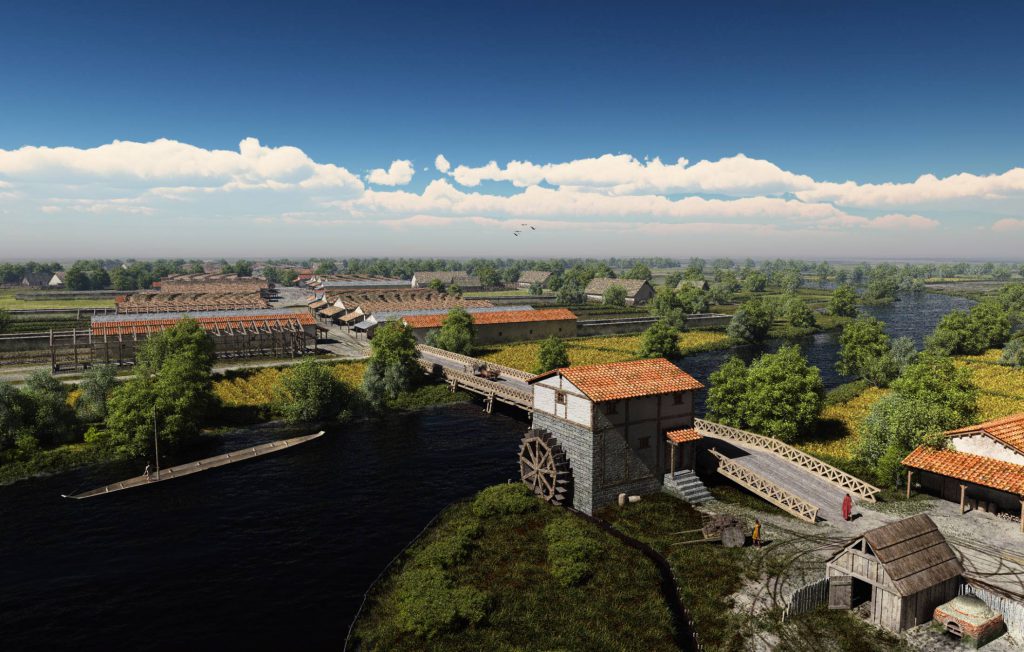Aqueducts and private baths
Roman water management
The Romans built their villas close to a brook, river or spring. That was not without reason: the availability of water was an important condition for being able to live somewhere. On average, the villas were at most 2.5 kilometres away from a water source.
Some villas, such as Ten Hove in Voerendaal and Vlengendaal in Bocholtz, had their own bathing facilities. The water for this was led from the streams in the area via small channels to the villas. The bathhouse in Heerlen was also supplied with stream water from the surroundings. To transport water over longer distances, the Romans built aqueducts. The city of Cologne, which counted 20,000 inhabitants, received water from a distance of 70 kilometres. Also in Tongeren a part of an aqueduct has been found.
Water is essential to survive. That is why it is also called the source of life. In Roman times and in the times before, springs and river mouths were places of worship. On the site of the Basilica of Our Lady in Maastricht stood a sanctuary in Roman times. The predecessors of the Romans already worshipped this place, close to the mouth of the Jeker. The symbolism of water still plays a major role in our time: it gives life, it makes live, it renews and renews again.
